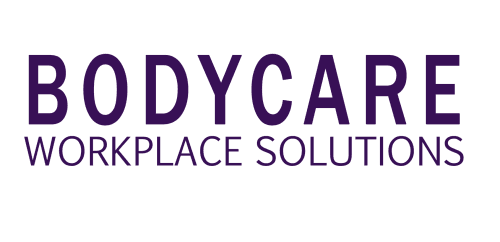How to start a conversation about returning to work following an injury

In the unfortunate event that one of your employees experiences an injury in the workplace, it is extremely important to have a defined strategy and return to work program in place, in order to effectively manage the injured worker’s return to work process. A key component of a successful return to work program, is ensuring clear and open lines of communication are established, whilst also making an effort to commence conversations with the injured worker about returning to work early.
As these conversations can be tough to initiate, it is important that your managers feel equipped with the tools that they need to start a meaningful and effective conversation with the injured worker, in order to facilitate a smooth and most importantly safe transition back to work.
Why is keeping open communication after an injury so important?
Research shows that employers who remain actively involved in their workers’ recovery process, are actively demonstrating their commitment to facilitating a swift and most importantly safe return to work, and as a result, experience a plethora of benefits.
Frequent and genuine communication, leads to benefits including a faster recovery for your employee, ensuring that you retain your worker’s valuable skills and knowledge and improving their overall mental wellbeing throughout what may be an emotionally and physically difficult time for them.
It’s important to remember that the way you treat your workers, is observed by their colleagues and a reflection on the value that you as an employer, place upon your staff. So many times, we have witnessed the positive flow-on effect that supporting your employee through the return to work process and taking a genuine interest in their wellbeing, has on other workers and we want to share that secret with you! Often, this results in improvements to team morale, as well as the injured worker feeling valued and supported themselves.
Not to mention, if you’re driven by the bottom line – the numerous financial rewards, such as a reduction in costs associated with recruiting and training a temporary replacement worker, as well as costs associated with lost productivity and minimising the impacts of the claim on your Workcover Insurance premium.
How soon should I contact an injured worker?
According to WorkSafe Victoria, employers who make contact with an injured worker in the first three days post-injury, have observed improvements to the return to work outcome of a whopping 63% in psychological injuries, and 26% in physical injuries.
What does this mean for you as an employer? It’s simple: the sooner the better!
Encourage the worker’s direct manager to extend their support early on after the injury and open the conversation, to simply see how the injured worker is doing, before introducing others, such as HR personnel or a return to work coordinator to devise an on-going plan for their return to work.
During this key window, you’ll need to balance the employee’s privacy by allowing them time to deal with their injury and the accompanying medical aspects, whilst initiating the conversation early, to show the injured worker that they do have another support network available to them as they prepare to navigate this unfamiliar and potentially daunting journey.
Keeping injured workers in the loop
For some injured workers, regular check-ins form a vital lifeline in the form of increased social interaction and positive mental stimulation. Staying away from work long-term can lead to low self-esteem, isolation, poor mental health and depression.
With this in mind, it’s important to use your conversations as a means of jointly developing a practical Return to Work plan, to document how the injured worker intends to transition back into the workplace. This may include discussion about:
- What support they need to improve their return to work experience.
- How frequently they would like to schedule check-ins.
- To what degree they would like to be kept in the loop with workplace updates and changes.
- Whether they need any adjustments or modifications to facilitate their return to work.

But, what exactly should I say?
Using the above points as a framework, you can offer the injured worker the opportunity to tell you what they need, but bear in mind that for many injured workers, this may be their first injury and they may be unclear or nervous about the process. This means that you must be prepared to share your knowledge, lead conversations and guide them through the process with confidence and compassion.
We recommend that you start by asking open ended questions to gain deeper insight into what the injured worker needs from you as their employer, such as “What support do you need to assist you in your recovery?”. When conversing, it’s important to really listen to the injured worker and what they are saying, so that you can best devise a plan to address these needs.
Proceed to ask questions about their progress, such as “How do you feel things are progressing and changing for you?” or “What do you feel is going well and what is challenging?”. This will allow you to monitor their progress and continue to adapt your return to work plan in response to their changing needs. The return to work plan is never designed to be a static document, but rather will evolve as the worker moves through the recovery process.
Finally, if you notice that the employee is feeling lost or confused, you may need to steer the conversation towards a solution for them, by asking questions such as, “Would it be helpful to discuss this with your GP/Psychologist/Physiotherapist?”.
One last tip – remember, that tone can drastically influence a conversation! Try to remain open, positive, genuine, encouraging, empathetic, compassionate and non-judgemental.
Following through is equally as important
Finally, it’s equally as important that you commit to following through on any agreed actions or promises. You are supporting your injured worker through a period of vulnerability, so we urge you to acknowledge the responsibility of this position, in order to maintain a strong working relationship and level of trust.
This includes turning up to return to work check-ins when you say you will. Even though the injured worker may not be in the workplace and front of mind, it’s extremely important to take the time to attend these meetings. We know that things can get busy, so make sure you set a calendar reminder to prompt you when a check-in is nearing.
Looking for further information?
If you need further support in initiating the conversation with a worker returning to work after an injury, contact us to speak with one of our experts who will guide you through the process.
References: https://content.api.worksafe.vic.gov.au/sites/default/files/2021-04/ISBN-The-sooner-the-better-2021-04a.pdf

